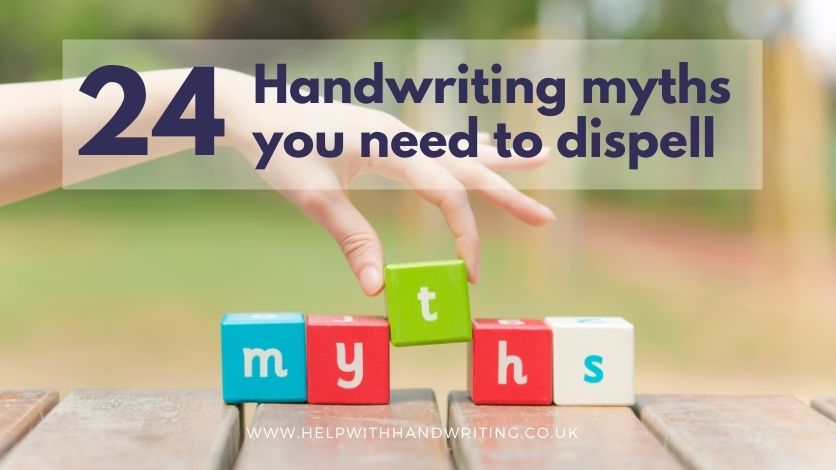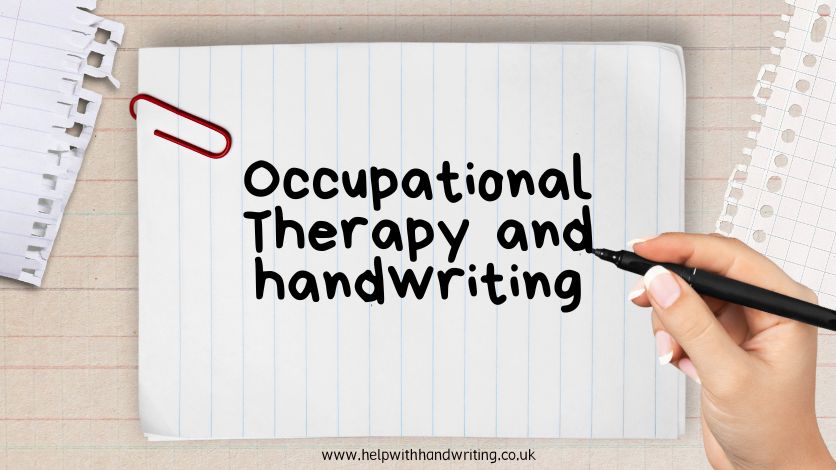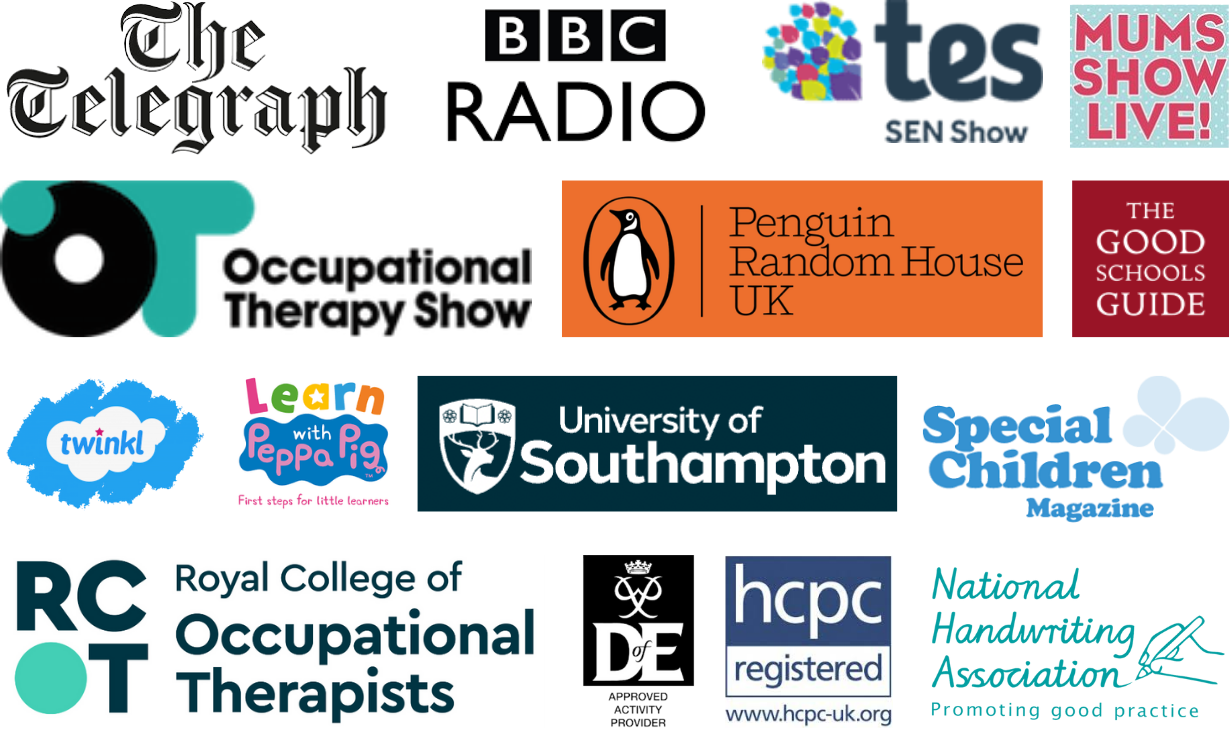What is a myth?
A myth is a traditional story. Or a widely held belief/idea that is false. However, in the world of handwriting practice, a myth becomes the reason why people give up on handwriting. It can be dangerous because of the power the misinformation falsely tells us.
New myths get easily created but rarely do they dispelled.
Some handwriting myths are so silly, that it is a wonder we have children handwriting these days.
Today we are going to change that. Giving you the information to know why they should be laughed at and dis regarded.
Are you ready for these handwriting myths?
They really are the good, the bad and the ugly.
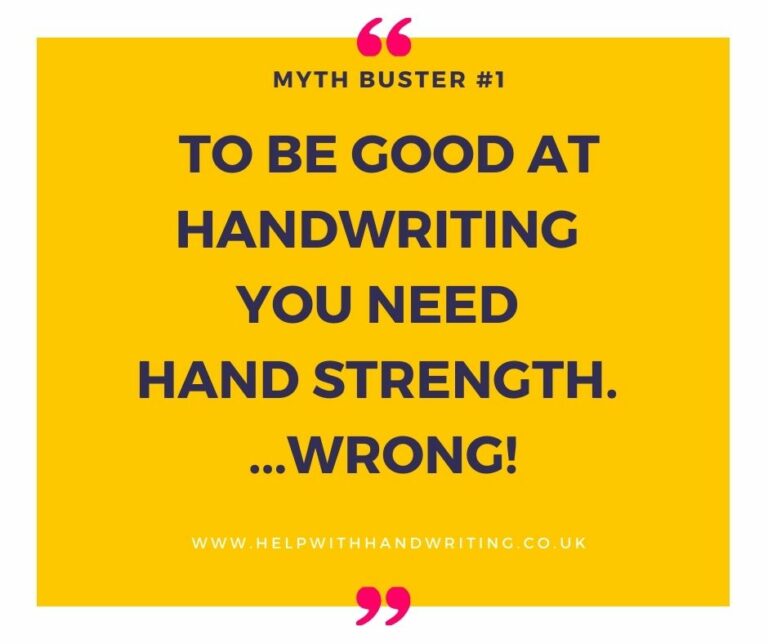
1. Strength is needed to write
This is wrong! Handwriting is about having precision when using our fingers. The only three fingers we need to use when writing are your thumb, index and middle finger. According to research by Alaniz M. et al hand strength is not needed. So we can be forgetting hand and finger gym activities that look to be all about having a power grip.
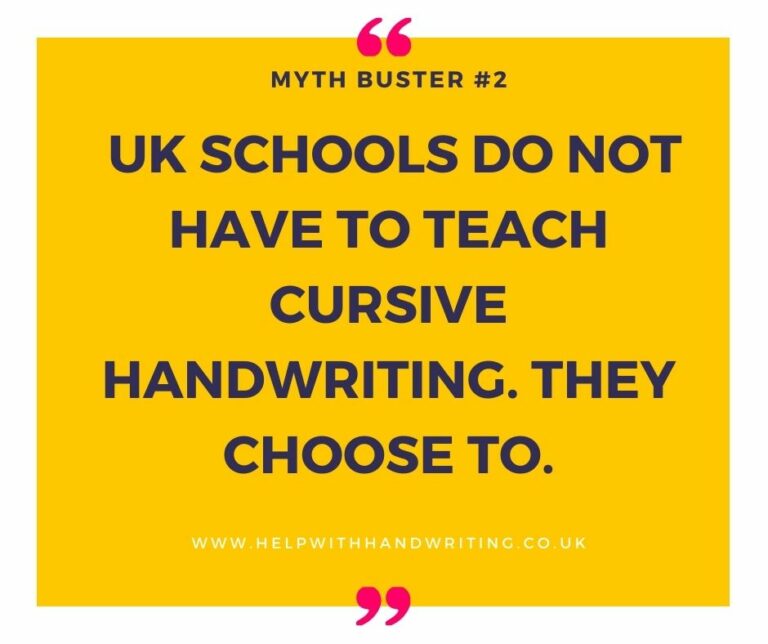
2. Using plastic pencil grips
The national curriculum teacher assessment framework advises that children in their primary years should join letters. It says in:
- KeyStage 1 (KS1) – Working at greater depth “use the diagonal and horizontal strokes needed to join some letters”.
- Key Stage 2 (KS2) – Working at expected standard “maintain legibility in joined handwriting when writing at speed”
Furthermore, there is no mention of cursive writing.
Primary schools should be teaching joined up handwriting. Joined up writing is one where there is a ‘kicking’ out letter stroke. This is so it is ready to join the next letter. Cursive writing or continuous cursive, as it can be called, is one where there is a ‘flicking’ action at the front of the letter and a ‘kicking’ stroke at the end of the letter. For children who are finding cursive writing difficult. This is great news, joining the letters without a ‘flick’ at the beginning is allowable.

3. Using plastic pencil grips
Not in my experience. By sticking a brightly coloured plastic grip on a pencil only highlights a problem to other children. In one school I have even seen triangular pencil grips being placed on triangular pencils. This is a real no no. (Read more about pencil grips)
There are many ergonomically designed pencils and pens that work just as well as a pencil grip. The pen company I favour is Stabilo. They have really thought about how a child holds a pencil and how to keep these instruments looking fun.
Another favourite of mine is to place stickers on a pencil. Firstly, ask your child to choose two stickers that are 1cm in diameter. Next, these get placed on a pencil where the thumb and index finger should go. As a rule, this technique works just as well as any plastic pencil grip.
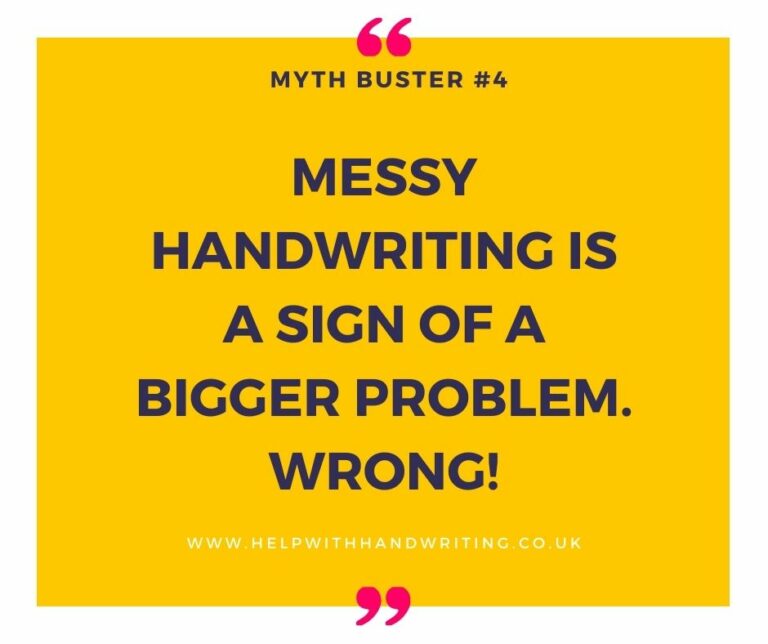
4. Messy writing equals big problems
No, there can be any number of reasons why a child is finding handwriting difficult.
It can be how they are holding the pencil/pen. How they are taught in terms of style they are trying to be reproducing. By this I mean the differences between joined up and cursive handwriting. Alternatively, how motivated they are.
Yes, there is a link between handwriting and learning. If someone finds handwriting difficult it will mean they will struggle to answer handwritten questions in school. This only means they find handwriting difficult not that there is necessarily a bigger underlying issue.
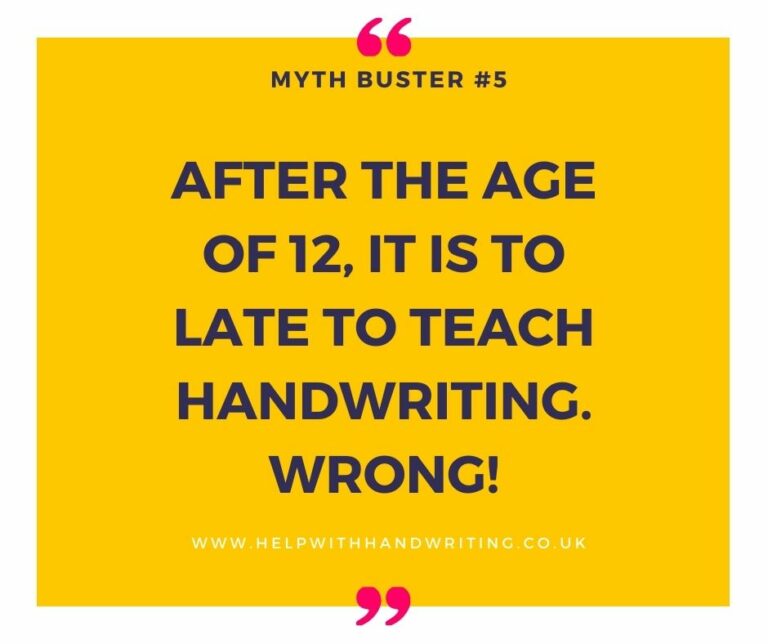
5. You're too old to teach
There is no age limit on teaching handwriting. As we get older it takes us longer to learn new skills but the real difficulty is teaching new habits. That is what takes time. If you are motivated then there are no boundaries to learning.
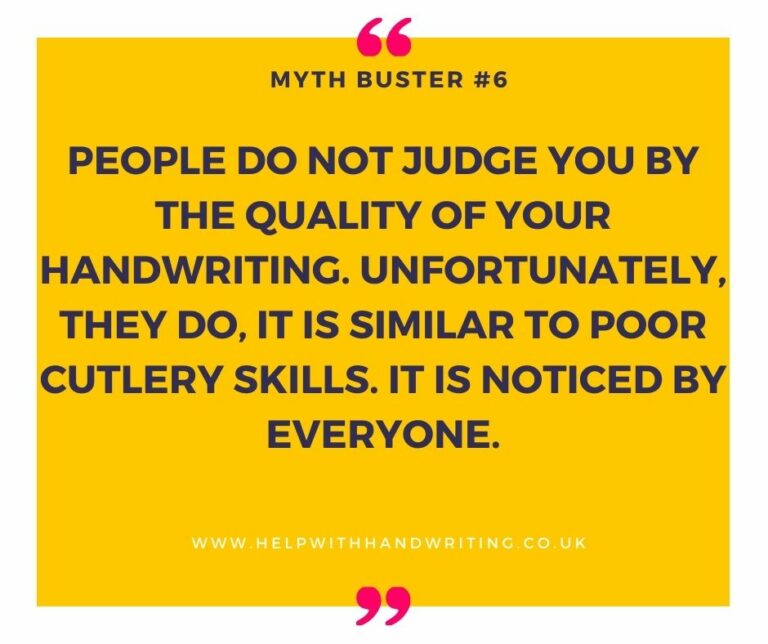
6. People judge us by our handwriting
UNFORTUNATELY they do, it is similar to poor cutlery skills. People do notice this.
I have a parent of a child that I see who was recently declined for a job based on his handwriting. Imagine that, in this day and age. Also, I’ve had employers ask me to work with employees because they felt poor handwriting was a bad reflection of the professionalism of their company.
Handwriting was even commented on when the cricket captain, Joe Root, was being asked what is Ben Stokes not good at? Yes, you’ve guessed it handwriting.
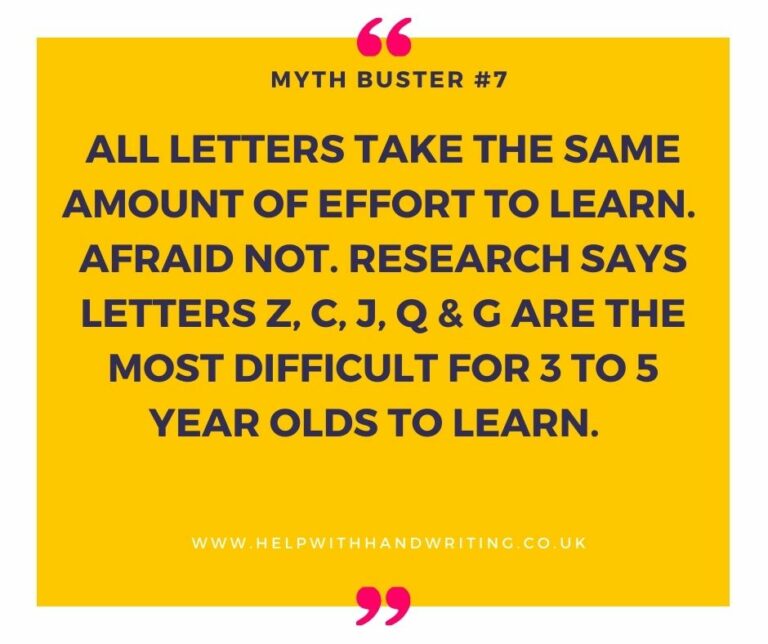
7. Five tricky letters
Make sure your child can write z, c, j, q and g in both capital and lower case letters. Research by Puranik C. et al says these are the most difficult to master.
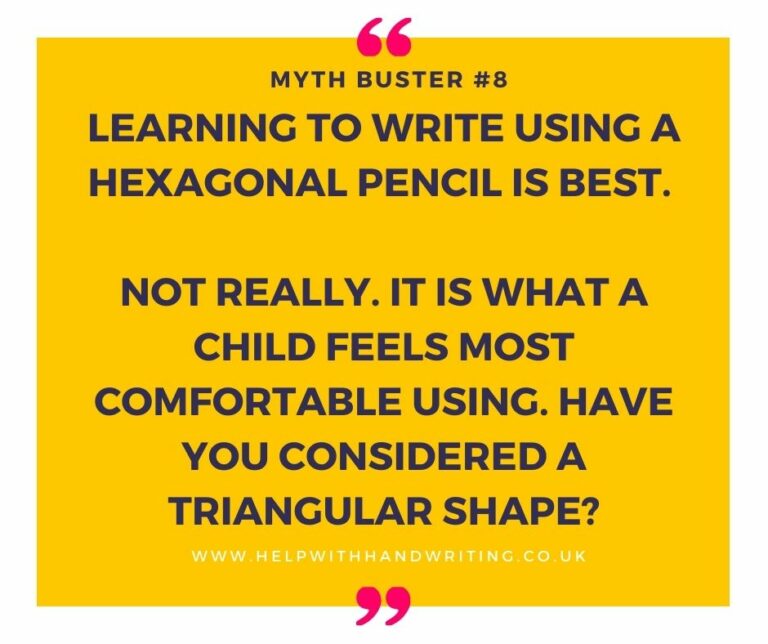
8. Use only a hexagonal pencil
Not really. It is what a child feels most comfortable using.
There is a really old piece of research dating back to 1986. It says if you give a child both hexagonal and triangular pencils, a child will always choose what they feel is the most comfortable to hold. Furthermore, we know when kids they feel comfortable they feel ready to try and write.
Why don’t you put both in a pot and see which one your child prefers?

9. The length of the pencil is important
This is untrue. In fact I often recommend a smaller length pencil for those children who wrap their first finger around the pencil shaft.
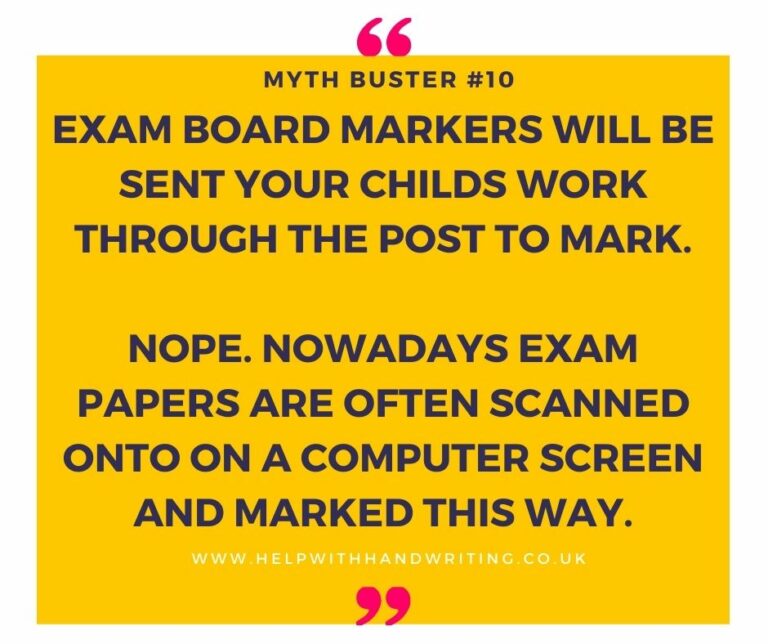
This used to happen. Nowadays exam papers are often scanned onto a computer screen. Examiners are marking directly off the computer screen. Meaning if your child has reduced handwriting legibility they may be loosing out on valuable marks. The only way an examiner can be helpful when looking at handwriting is to zoom in and out.
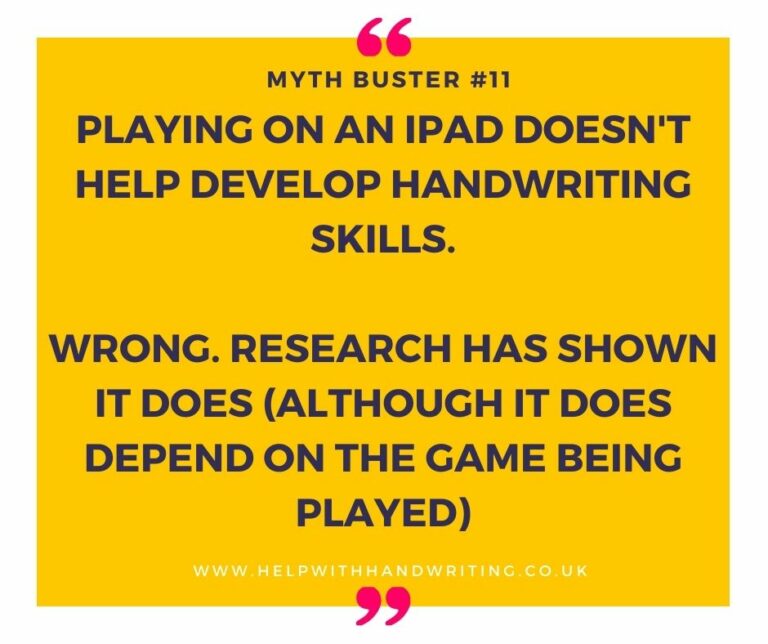
11. Using an iPad
Being wrong here is great news. Research by Axford C et al reveals an iPad helps when looking to improve handwriting. Although it does depend on the game being played. The games researched here were all motor developing games. They were aiming at improving fine motor finger skills.

12. Handwriting intervention
Reseacrh backs up that taking steps to improve handwriting in not wasted. It does make progress. The most effective people to this are us (well, occupational therapists).

13. Pen pressure
The amount of pressure we use through our hands when writing is crucial. Too much our hands hurt. Too little and the ink looks faint on the paper. Finding a pen that works for you is crucial. Rollerballs are best and biros are best avoided as you have to press heavier to get the ink to come out of them. It might be a slight difference in pressure but in an exam where you write for over one hour, this can cause hand pain.
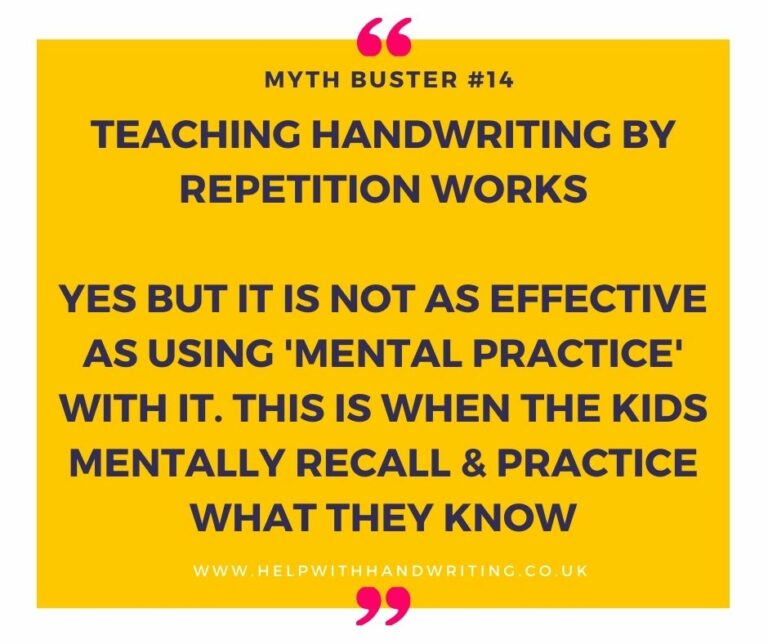
14. Repetitive writing
It might work but really it is very boring. There are other ways we can write the same word or letter. Writing has to have a meaning and a purpose. writing the same word over and over again to me is meaningless.

15. Reviewing your work
Great news, teenagers can accurately review their own handwriting. The bad news is that boys may overegg their abilities in terms of speed.
Do not underestimate how much handwriting means to a teenager. It means the difference between getting their work read and marked. They know when it does not look good but often they do not know how to fix it. The ‘Make it readable in 66 days’ teaches them this.
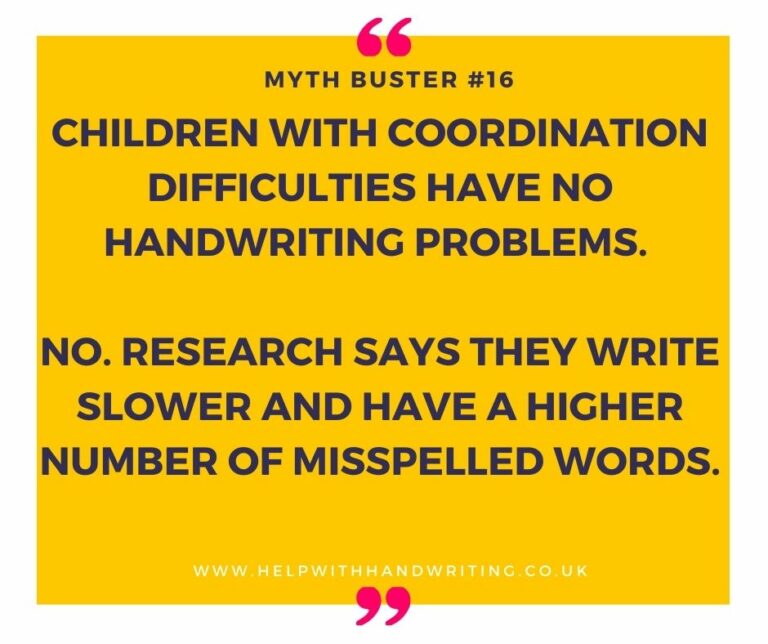
16. Children with a developmental coordination disorder, also known as dyspraxia, can have handwriting difficulties
This is about giving a child time to write. They need time to process the instruction. Time to think about what to write and time to make the motor movements to write. If you see a child looking as if they have not heard an instruction. Give them an extra 15 seconds before you say anything. They may be needing time to understand what is being asked.
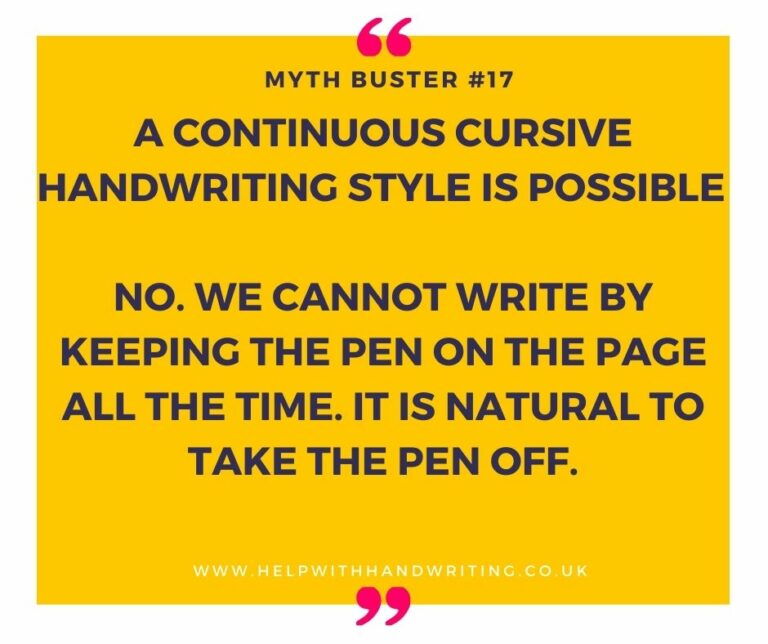
17. Writing without taking your pen off the paper
There is a belief that cursive writing is best because you do not take your pen off the paper. we are talking about adding nanoseconds to the time of writing if using the printed vs the cursive style. As long as the writing is readable does it matter?
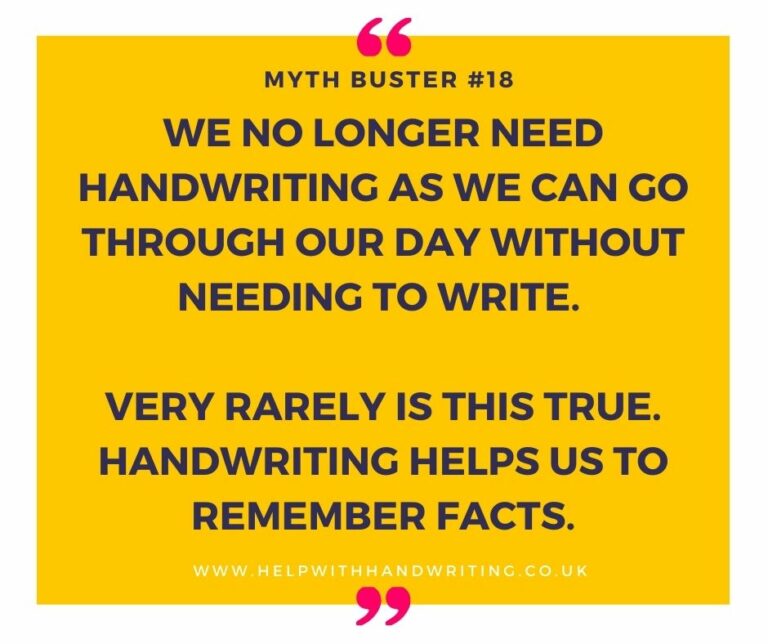
18. Writing helps us think
Research by Harvard University says differently. They tested the same class but divide them in two. The first half was asked to handwrite their work. The second half typed. Twenty-four hours later they tested them. Those that handwrote remembered more. This is because the physical act of writing engages a different part of the brain to recall information than listening and typing.

19. Batteries help you write faster
I found this myth on a forum site. Someone was advocating you learn to write with batteries attached to the top of the pen. when you take off the batteries the pen feels lighter and will help you to write faster. Total rubbish!
Research has shown that using weighted pens makes no difference to handwriting speed.
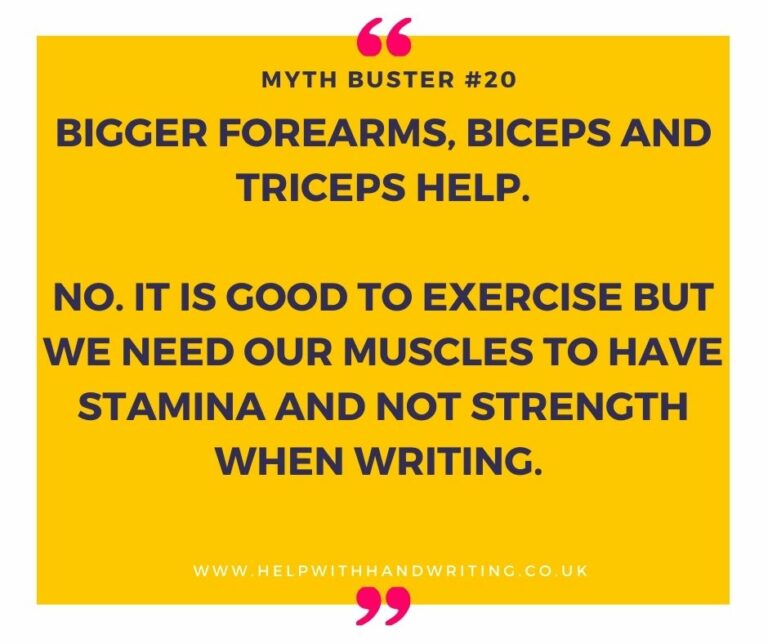
20. We need bigger biceps to write
Working out is great. Being physically active is great. Neither will help improve handwriting. To write we need stamina and the fine motor control to make intricate hand movements.

21. There is a medicine we can take to improve our writing
Again, this was found on a forum site. There is no magic potion to handwriting – just hard work, time and perseverance.

22. Write daily the same number
There is a bit of truth behind this myth. All letters comprise of round shapes or straight lines. If you were just starting to write then drawing a shape or writing the letter zero would be a good idea. However so would drawing rewriting patterns. For example eeeee, mmmmm. What is more realistic is to practice writing the most used words in the English language – the, of, and.
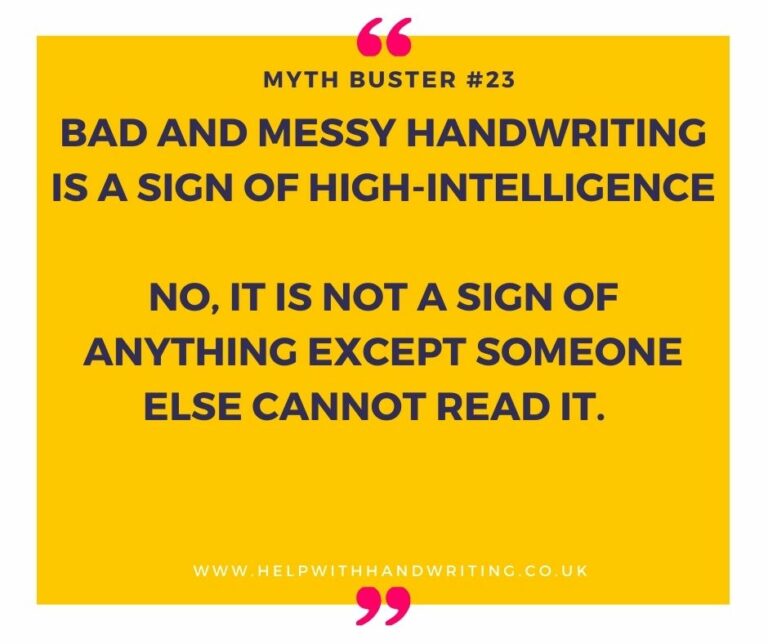
23. Your intelligent if you have messy writing
There is no truth to this. It is often joked about that doctors have messy handwriting. This is because they are writing fast and are often pushed for time. It was for this reason that doctors now have to type prescription so that medical errors do not happen.

24. No!
These are just plain silly.
To conclude:
I hope that you have found these handwriting myths helpful. To summarise, handwriting is not a sign of a bigger problem, it can be improved at any age and having spicy foods or placing batteries at the end of your pen is not going to be the key to handwriting success.
References:
- Alaniz, M. L. et al (2015). Hand strength, handwriting, and functional skills in children with autism. American Journal of Occupational Therapy, 69.
- Alston (1986) The Effects of Pencil Barrel Shape and Pupil Barrel Preference on Hold or Grip in 8-year-old Pupils, Occupational Therapy.
- Axford C et al (2018) iPad applications that required a range of motor skills promoted motor coordination in children commencing primary school, Australian Occupational Therapy Journal (2018) 65, 146–155.
- Cricket reference: https://www.theguardian.com/sport/2019/aug/25/ben-stokes-ashes-cricket
- Puranik C. et al (2013) Dimensionality and Reliability of Letter Writing in 3- to 5-Year-Old Preschool Children, Learn Individ Differ. 133-141.


